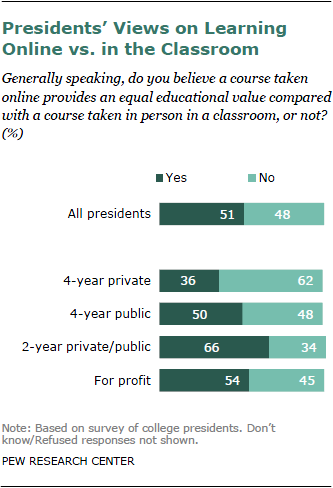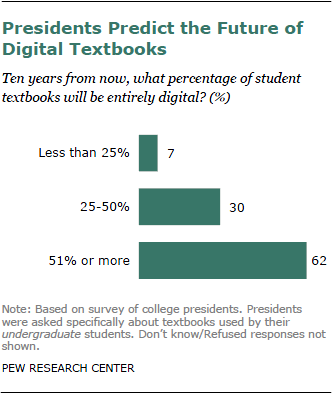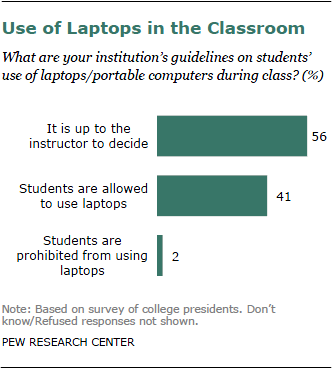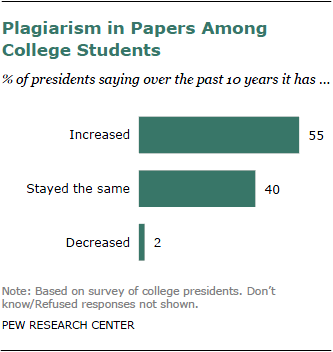
In addition to expanding access to educational opportunities through online learning, digital technology shows promise in revolutionizing other aspects of education. College texts are big business, with the higher education market estimated at more than $8 billion annually.6 But paper may be giving way to digital versions—whether consumed on a web page, a library’s ―e-reserves‖ or through an e-reader such as a Nook or Kindle. The advent of digital textbooks has already begun; digital textbooks make up about 3% of sales, according to the National Association of College Stores.7 And in July, Amazon announced the option to rent textbooks on the Kindle for as little as 30 days.8
The college presidents surveyed believe that a rapid conversion to digital textbooks is just around the corner. Just under two-thirds of today’s college presidents (62%) believe that more than half of the textbooks used by students at their institution a decade from now will be entirely digital. Just 7% of presidents believe that less than a quarter of the texts their students will use in the future will be digital, and 30% estimate the share will be between 25% and 50%.
Even those presidents who oversee institutions where online learning is less prevalent predict a dominant role for digital textbooks. Among the leaders of four-year private colleges, 60% say that 10 years from now more than half of the textbooks used by their students will be entirely digital. This compares with 59% of presidents from four-year public universities, 65% of presidents from two-year institutions and 66% of presidents from for-profit colleges.
Laptops on Campus

As more and more students own laptops and other portable computing devices, and as course texts migrate into digital environments, schools have a policy decision before them—allow laptops in the classroom for note-taking and e-textbook reading; ban their use during class time as an unwelcome distraction from learning; or allow instructors to make their own decisions about whether to allow the devices in class. Most colleges and universities have settled on a middle ground for the time being. A narrow majority of college presidents (56%) report that it is up to the instructor as to whether students can use portable computers during class. An additional 41% say that students are allowed to bring their laptops to class. And just 2% say their institutions prohibit laptops from the classroom.
Plagiarism and New Technologies

While technology has shown promise in expanding opportunities for distance learning and for creating less expensive and more interactive learning materials, it may also facilitate certain negative behaviors including plagiarism and cheating. When asked about plagiarism in papers among college students, the majority of college presidents (55%) say that it has increased in the past decade. Another large portion of presidents (40%) believe that it has stayed the same over the past 10 years. Very few college presidents (2%) believe that plagiarism has decreased over the past decade.

These findings are similar across different types of colleges and universities, nonprofits and for-profits, four-year and two-year institutions, community colleges, liberal arts colleges and research universities as well as across the spectrum of admissions selectivity.

When asked whether they feel that computers had played a role in the increase in plagiarism, presidents overwhelmingly believe that they have. Roughly nine-in-ten presidents (89%) believe that computers and the internet have played a major role in the increase in plagiarism on papers over the past decade. Just 7% say they have played a minor role, and 1% say they have not played a role in the increase.




